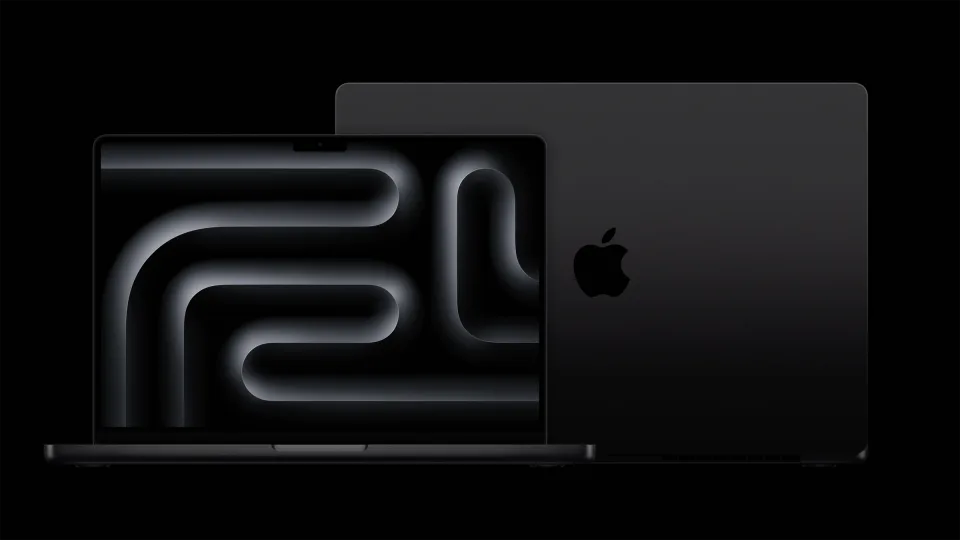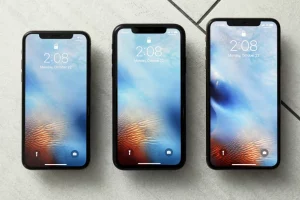It’s that time of year, a favorite for The Addams Family, but Apple’s pre-Halloween “Scary Fast” event didn’t bring any mysterious or spooky surprises. Thanks to the leaks and rumors surrounding the M3 chip, most of the company’s announcements were quite anticipated. Despite the somewhat unusual evening timing for the showcase, it’s hard to picture Tim Cook ever embodying a ghostly presence.
In any case, Apple had a series of product updates on the agenda, particularly in their new MacBook Pro and iMac lineups. The central focus of the event revolved around a trio of fresh chipsets that, as expected, Apple is presenting as their most powerful yet.
M3 chipsets
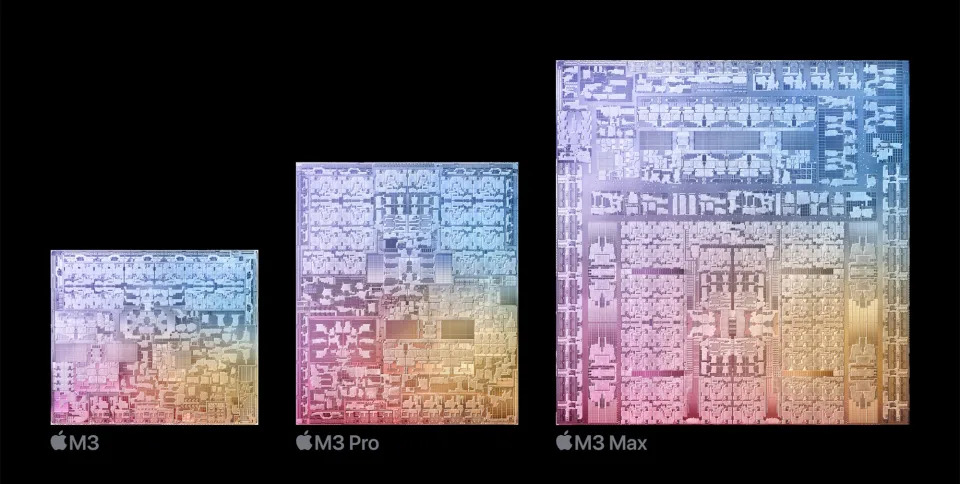
At the “Scary Fast” event, Apple introduced a trio of cutting-edge M3 chips: the M3, M3 Pro, and M3 Max. These chips are poised to deliver notably increased speed compared to the earlier M2 chipsets. Apple made it quite clear that they are significantly more potent than their M1 counterparts, ensuring that users with devices featuring the first-generation Apple silicon chips won’t resist the urge to upgrade.
Remarkably, these chips mark a pioneering achievement as the first three-nanometer chips designed for PCs. On the graphics processing front, Apple has integrated hardware-accelerated ray-tracing and mesh shading to provide more lifelike lighting and superior geometry handling.
The base M3 boasts an eight-core CPU, consisting of four performance cores and four efficiency cores, paired with a 10-core GPU. It supports up to 24GB of unified memory. The M3 Pro, on the other hand, features a 12-core CPU with six performance and six efficiency cores, along with an 18-core GPU. This mid-range chipset can accommodate up to 36GB of RAM.
Moving on to the M3 Max, it’s a powerhouse, delivering a performance boost of up to 80 percent over the M1 Max, according to Apple. This formidable chipset boasts a 16-core GPU with 12 performance cores and four efficiency cores, a 40-core GPU, and support for an impressive 128GB of RAM, catering to users with substantial memory requirements.
These chips represent significant upgrades for those transitioning from an M1-powered device or an Intel-based Mac. They promise enhanced performance across a range of applications, including productivity, creativity, and even gaming, with high-profile titles like Death Stranding Director’s Cut finding their way into Apple’s ecosystem.
M3 MacBook Pro
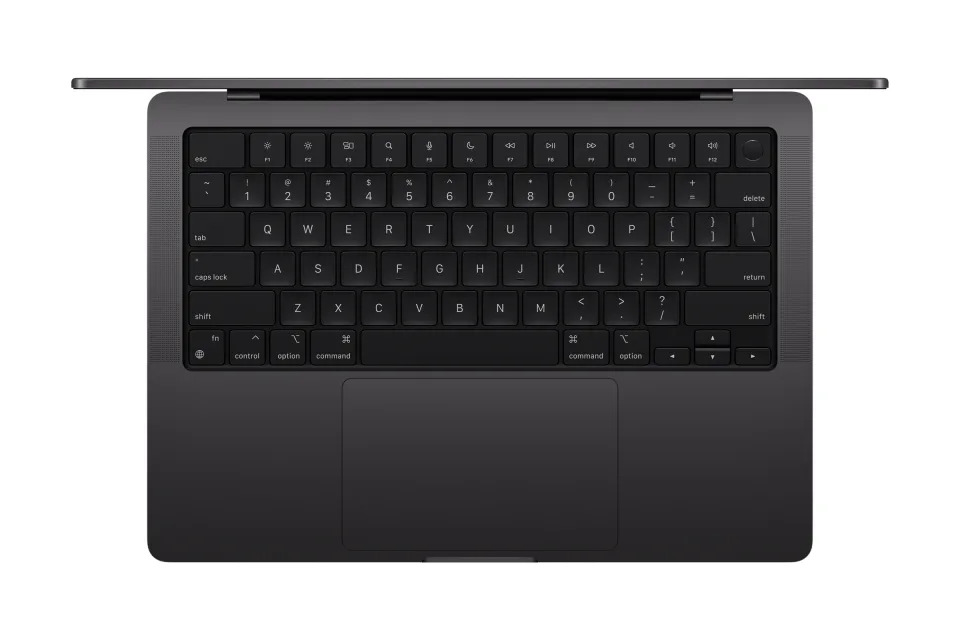
Undoubtedly, these advanced chips won’t fully realize their potential without being integrated into capable hardware. Consequently, Apple unveiled enhanced MacBook Pro models powered by the M3 chips.
You have the choice of the new 14- and 16-inch MacBook Pros. The 14-inch version commences at $1,599 for a model equipped with the base M3 chip, marking the most budget-friendly entry point for a new 14-inch MacBook Pro. There was no version with a base M2 chip, so to opt for that form factor, you’d previously have had to invest $1,999 in an M2 Pro-powered unit. Now, you can select a 14-inch MacBook Pro with an M3 Pro for the same $1,999 price tag.
On a parallel note, the 16-inch MacBook Pro begins at $2,499 for a model featuring an M3 Pro chip, mirroring the previous starting price of an M2 Pro-powered model.
Major hardware alterations aren’t to be expected elsewhere in these latest models; it’s primarily a specification upgrade. One noteworthy adjustment, however, is the improved capability of the laptops’ Liquid Retina XDR displays to exhibit SDR content with an additional 20 percent brightness, reaching up to 600 nits.
Arguably, the most appealing aspect of the new MacBook Pros is the introduction of the Space Black chassis. It’s a feature that makes switching from Windows to Mac more enticing than ever, purely for the aesthetics. The added power from the M3 chips serves as a welcome bonus, although it’s worth noting that the Space Black option isn’t available for the base 14-inch MacBook Pro.
Nonetheless, not every aspect of the refreshed MacBook Pros is a Halloween treat. The base 14-inch model comes with a modest 8GB of RAM, which may not entirely align with Apple’s promise of significantly enhanced performance in the new MacBook Pros.
Pre-orders for the new MacBook Pro models are currently open, with Apple slated to commence shipping them on November 7.
M3 iMac
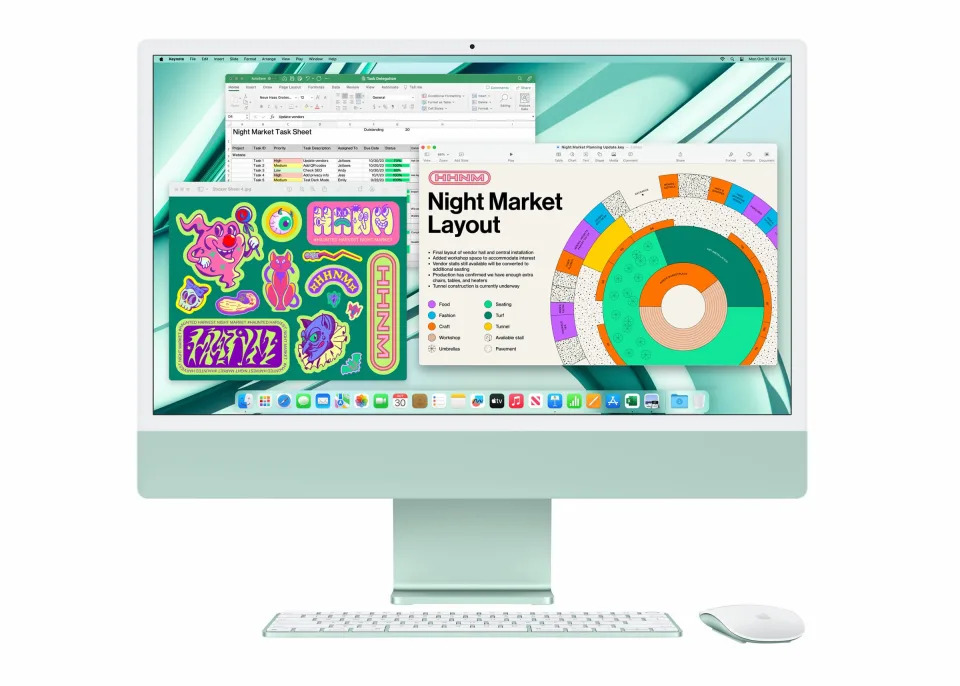
The new 24-inch iMac bears a striking resemblance to its predecessor, with the primary distinction lying in the updated chipset and a handful of minor refinements. Apple asserts that the M3-powered system offers twice the speed of its forerunner, which relied on the M1 chipset.
According to the company, Safari and productivity applications like Microsoft Excel will exhibit up to a 30 percent increase in performance compared to the M1 iMac. Additionally, the M3 iMac can support up to 12 video streams in 4K resolution, a threefold improvement over the previous iMac. Image processing and video editing applications will also run at double the speed, as per Apple’s claims.
On the connectivity front, there are slight enhancements as well. The M3 iMac is equipped with Wi-Fi 6E and Bluetooth 5.3, surpassing the previous model’s Wi-Fi 6 and Bluetooth 5.0.
The base model of the M3 iMac, featuring an eight-core GPU and an eight-core CPU, starts at $1,299. However, it’s worth noting that this configuration includes only 8GB of RAM and 256GB of SSD storage, so you may want to consider expanding these specs. Pre-orders for the M3 iMac are currently open, with the updated desktop set to be available next week.
Everything else
Aside from the introduction of M3 chips, the new MacBook Pros, and the refreshed iMac, the Scary Fast event was equally notable for what Apple chose not to discuss. To discern these omissions, you had to read between the lines and realize that Apple has bid adieu to the 13-inch MacBook Pro, effectively marking the end of the Touch Bar, both beloved and despised, at least for the time being.
There were widespread expectations that Apple would update various accessories to feature USB-C ports as part of its shift away from Lightning connectors toward a universal charger. However, this did not materialize during the Scary Fast event. Consequently, for the time being, you’ll still require a Lightning cable, particularly for your Magic Keyboard and Magic Mouse.
Furthermore, while speculations swirled about the possibility of Apple unveiling M3-powered iPads, the company chose not to introduce any such tablets on Monday. As a result, those eager for tablets equipped with the new chips will have to exercise a bit more patience.

